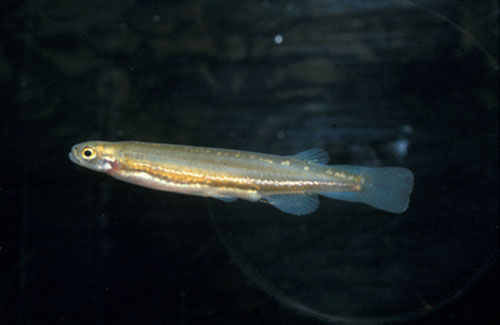| Galaxiidae (Galaxiids), subfamily: Galaxiinae |
| 6 cm SL (male/unsexed) |
|
benthopelagic; freshwater |
| Oceania: endemic to Australia. Known only from the southwestern part in coastal streams between Albany and Ellen Brook. |
|
Dorsal spines (total): 0-0; Dorsal soft rays (total): 6-8; Anal spines: 0-0; Anal soft rays: 9-12; Vertebrae: 38-43. Adults are brown-grey dorsally and white ventrally with several whitish blotches near the dorsal midline, and a broad brown stripe just below midline from behind eye to caudal-fin base. |
| Occur in swift-flowing, tea-colored streams coursing through karri forests. Also found in swamps, ponds and roadside ditches. Usually lives in small flowing streams near submerged vegetation. Water inhabited is darkly tannin-stained and acidic (pH 3.0-6.0) (Ref. 44894). Feed on insects and their larvae in water; also on micro-crustaceans. Spawning has been recorded from July to October, peaking between August and September when water temperatures and day length are on the rise. Multiple-spawning females deposit several clutches of eggs over a protracted period of a few weeks in flooded vegetation. Sexual maturity is attained in the first year. Spent adults usually die a few months after spawning (Ref. 44894). |
|
Endangered (EN); Date assessed: 10 January 2019 (B2ab(i,ii,iii,iv)) Ref. (130435)
|
| harmless |
Source and more info: www.fishbase.org. For personal, classroom, and other internal use only. Not for publication.

